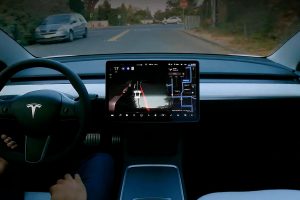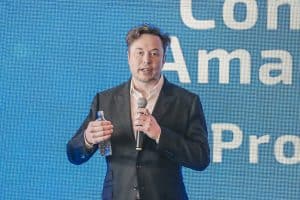Key Points
- 💰 GM anticipates profitability in its EV segment by 2025 with higher-margin models entering the market.
- 🚗 The automaker aims to achieve mid-single-digit pretax profits in 2025, despite current losses on each EV sold.
- 🔋 GM expects profitability from the production of higher-margin models, reduced battery costs, and manufacturing improvements.
- 🌐 The goal is to build one million EVs annually by the end of 2025, spreading costs across a larger vehicle lineup.
- 📉 GM has faced challenges, including machinery issues and strikes, impacting EV production and a delayed Ultium Cell plant opening.
- 📈 GM’s CFO sees increased benefits from upcoming clean energy tax credit guidance, set to begin on January 1.
- 🤔 Concerns are raised about rising EV demand but slowing sales in the U.S., with a cautious approach to production targets to avoid discounts.
General Motors (GM) is expecting to reach profitability on electric vehicles (EVs) by 2025 as higher margin models hit the market, according to a statement from one executive last week.
On Thursday at the Barclays conference in New York, GM’s Chief Financial Officer Paul Jacobson told analysts that the automaker expects to start generating mid-single-digit pretax profits in 2025 (via AP News). Although the company currently loses money on each EV sold, Jacobson said GM expects profitability to come from the production of higher margin models, along with reductions in battery costs and continued improvements to manufacturing.
“While the ramp has been a little bit bumpy, we have worked through that,” Jacobson said.
GM has had problems with machinery at its assembly plants that stacks battery cells into modules. The automaker produces its battery cells at a joint venture facility with LG Energy Solution outside of Warren, Ohio.
GM is aiming to build one million EVs annually by the end of 2025. If GM can spread its current costs across a larger lineup of vehicles as it boosts sales, Jacobson explained, then it should be able to reach profitability within the timeline.
Among other topics discussed during the conference appearance last week, Jacobson also said that GM is expecting increased benefits from upcoming clean energy tax credit guidance from the U.S. Treasury, set to go into effect on January 1. He also pointed out that the current forecast of mid-single-digit profit margins in two years is slightly improved from the low-to-mid-single-digits GM was previously expecting.
Jacobson also aired some concerns surrounding EV demand, noting that it is rising despite the rate of its EV sales slowing in the U.S. market this year. If the company doesn’t see demand for its one million vehicle target, then Jacobson says GM won’t make that many units as the company wants to avoid selling them at large discounts.
“I don’t want to stuff vehicles into a market that doesn’t want them,” Jacobson added.
The statements come after GM announced plans to delay the opening of an Ultium Cell plant in Tennessee and following costly six-week strikes against the automaker, during which it said it would slow down its EV production efforts.
GM has also struggled with its self-driving unit Cruise after one of the startup’s robotaxis struck and dragged a pedestrian in San Francisco before stopping on top of her. The company’s driverless permit was immediately revoked, and the company faces both federal and state investigations.





